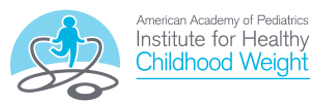Breastfeeding Friendly Environments
Action steps to increase breastfeeding friendly environments in the community:
Permit breastfeeding in public places and rescind laws that discourage breastfeeding in public places.
Most women who breastfeed their children will, at some time or other, find it necessary to nurse their children outside of their homes. There are no laws in the US forbidding breastfeeding outside of the home, and only two states in which laws place any limitation on the way in which public breastfeeding may be done. However, in the absence of a law establishing and protecting the right, a woman who breastfeeds in a public accommodation; a privately owned place open to the public, such as a restaurant or shopping mall, might lawfully be asked to leave, either by the owner or in accordance with the owner's instructions. Create breastfriendly communities by establishing policies in your community that support the right of women to breastfeed in public.
Recommended by:
- AAP policy: Breastfeeding and the Use of Human Milk
- Centers for Disease Control and Prevention (CDC): Recommended Community Strategies and Measurements to Prevent Obesity in the United States
- Institute of Medicine (IOM) Report: Local Government Actions to Prevent Childhood Obesity
For more information:
- La Leche League International: Breastfeeding and the Law
Encourage the creation of lactation rooms in public places.
Local governments can implement policies and programs that make it easier for mothers to breastfeed. Providing nursing mothers a breastfeeding-friendly environment (e.g. creating lactation rooms in public places) can help to improve the duration of breastfeeding.
Recommended by:
- AAP policy: Breastfeeding and the Use of Human Milk
- Centers for Disease Control and Prevention (CDC): Recommended Community Strategies and Measurements to Prevent Obesity in the United States
- Institute of Medicine (IOM) Report: Local Government Actions to Prevent Childhood Obesity
For more information:
- United States Breastfeeding Committee
- The Centers for Disease Control and Prevention (CDC) Guide to Breastfeeding Intervention
- National Business Group on Health: Investing in Workplace Breastfeeding Programs and Policies
Develop incentive programs to ensure breastfeeding-friendly worksites.
Develop an incentive or award program to showcase worksites in your community that are mother and baby friendly because of their breastfeeding policies (such as allowing adequate breaks for nursing mothers, accommodations to pump or store breastmilk, general support from employers and colleagues, classes to support breastfeeding, and/or childcare facility on site).
Recommended by
- AAP policy: Breastfeeding and the Use of Human Milk
- Centers for Disease Control and Prevention (CDC): Recommended Community Strategies and Measurements to Prevent Obesity in the United States
- Institute of Medicine (IOM) Report: Accelerating Progress in Obesity Prevention: Solving the Weight of the Nation
For more information:
- Australia's Breastfeeding Friendly Workplace Accreditation (BFWA)
- United States Breastfeeding Committee: Accommodations in the workplace checklist
- The Centers for Disease Control and Prevention (CDC) Guide to Breastfeeding Intervention
- National Business Group on Health: Investing in Workplace Breastfeeding Programs and Policies
Advocate for baby friendly hospitals and/or the incorporation of the UNICEF/WHO ten steps to successful breastfeeding.
Many hospitals have practices that are detrimental to breastfeeding including the routine use of formula supplementation and free samples, pacifier use, and the separation of mother and infant. Fortunately, hospitals that have implemented comprehensive policies and practices that support exclusive breastfeeding, and offer an optimal level of care for lactation may become a certified Baby-Friendly Hospital. Research has shown that mothers who gave birth in a Baby-Friendly Hospital had increased rates of initiating breastfeeding and exclusively breast fed their babies for a longer time.
Recommended by:
- AAP Policy: Breastfeeding and the Use of Human Milk
- AAP Endorsed Statement: UNICEF/WHO Ten Steps to Successful Breastfeeding; AAP Footnote
- Centers for Disease Control and Prevention (CDC): The CDC Guide to Strategies to Support Breastfeeding Mothers and Babies
- Institute of Medicine (IOM) Report: Accelerating Progress in Obesity Prevention: Solving the Weight of the Nation
For more information:
Last Updated
03/22/2022
Source
American Academy of Pediatrics
